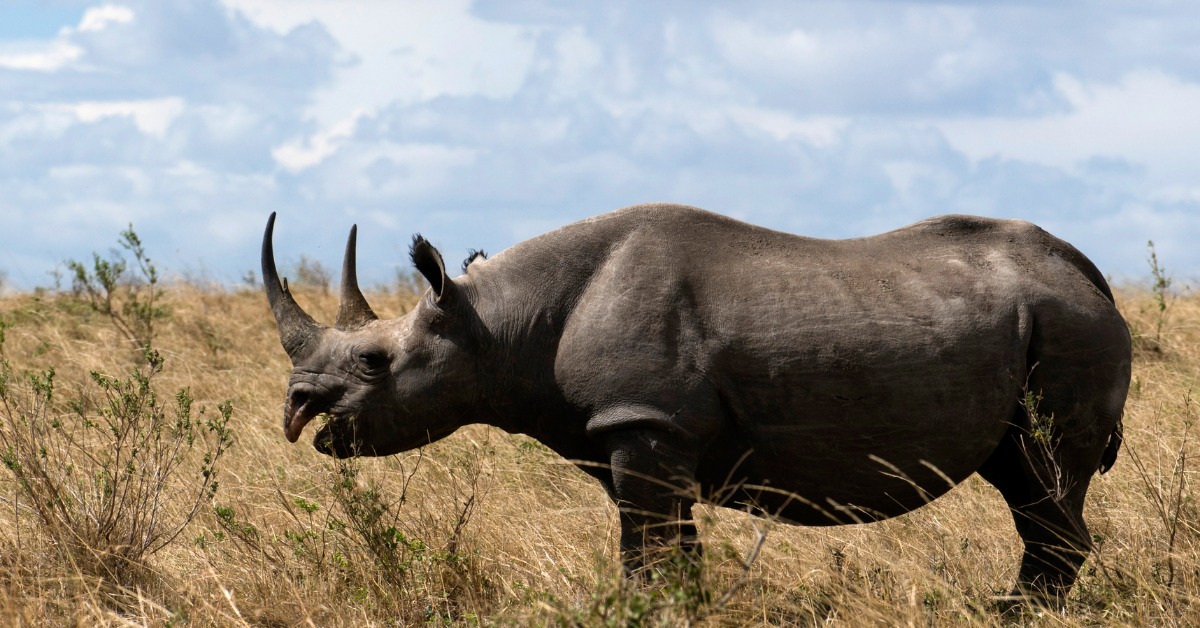
Black rhinos consume mainly woody plants and grasses. The grass is generally only eaten when looking for new low-growth but soft grass leaves are deliberately harvested occasionally and may constitute more than 10% of the rainy season diet. A wide range of ingested during a foraging year, typically 90% of the diet consists of fewer than 20 species.









